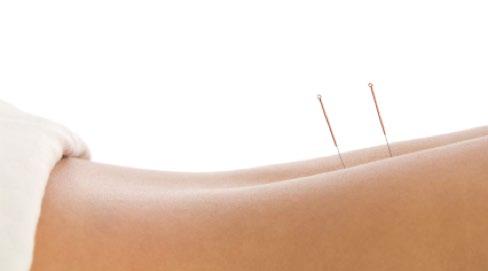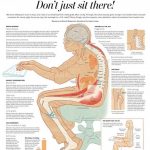Trigger Point Dry Needling
____________________________________


Epidemiologic studies from the United States have shown that MTrPs were the primary source of pain in patients presenting to a primary care setting from 30-85% of cases.

What is Trigger Point Dry Needling (TDN)?
A MTrP is a highly localized, hyper-irritable spot in a palpable, taut band of skeletal muscle fibers. These muscle trigger point play a role in producing and maintaining the pain cycle.
These MTrPs develop in muscle for various reasons including : referred or local pain,inflammation, tissue injury or other causes.
Trigger point dry needling (TDN) is a specific treatment technique that uses a solid filament needle to treat muscle trigger points (MTrP).
TDN is an effective therapy to treat muscular tension and spasm which commonly accompanies conditions such as arthritis, nerve irritation, muscular strain, ligament strains and herniated discs.
It is called “Dry” Needling because there is no solution injected as with a hypodermic needle during a flu shot. With Dry Needling, the needle itself and the effects it produces within the tissue is the treatment.
How Does TDN Work?
When an injury occurs from repetitive use or acute trauma, inflammation will be produced from the damaged tissues. The damaged tissues will also go into a protective tension state or contracture to guard against further damage from utilizing the injured tissue. This contracture and inflammation inhibit microcirculation which limits both the oxygen rich blood reaching the injury and the waste products leaving the injury. The injury site becomes hypoxic (decreased in oxygen) which stimulates the body to produce fibroblasts, a cell that produces fibrosis or scar tissue. This fibrosis and scarring builds up around the muscles and tissues limiting the tissues ability to fully function (lengthen/shorten) and can also cause compression and irritation of nerves (such as carpal tunnel syndrome) – all of which inevitably lead to biomechanical disturbances in gait and function.
TDN uses a small, solid filament needle which is inserted in a contracted painful knotted muscle to create a local twitch reflex which is both diagnostic and therapeutic as it is the first step in breaking the pain cycle as research shows will decrease muscle contraction, reduce chemical irritation, improve flexibility and decrease pain. When a needle is inserted into muscle it will also produce a controlled lesion and will cut between three to fifteen thousand individual muscle fibers. The body considers the needle as a foreign invader and will activate the immune system as a response. The cut muscle fibers also produce an inflammatory reaction that your body will respond to not just locally but all over the body to reduce inflammation systemically.
Mechanical effects
- Dry Needling may mechanically disrupt a dysfunctional motor end plate
- Needling results in a Local Twitch Response (LTR)
- The LTR results in an alteration to muscle fiber length as well as having an inhibitory effect on antagonistic muscles
Neurophysiological effects
- Baldry (2001) suggests that dry needling techniques stimulate A-nerve fibers (group III) for as long as 72 hours post needling
- Prolonged stimulation of the sensory afferent A-fibers may activate the enkephalinergic inhibitory dorsal horn interneurons, which implies that dry needling causes opioid mediated pain suppression
- Another possible mechanism of dry needling is the activation of descending inhibitory systems which would block noxious stimulus into the dorsal horn
- The LTR may also utilize the excessive ACh in the tissue which previously was triggering increased firing of localized fibers
Chemical effects
- Studies by Shah and colleagues (2001) demonstrated increased levels of various chemicals at sensitized motor end plates such as: Bradykinin, Substance P and CGRP (regulator of Calcium and Phosphate balance). These chemicals were reduced immediately post a LTR.
- CGRP enhances the release of ACh from nerve terminals, which results in increased ACh receptors at the neuromuscular junction
- Needle penetration will cause micro-trauma and micro bleeding (localized inflammation) and hence the introduction of PDGF into the area to help promote healing
How is TDN different from Accupuncture
Trigger Point Dry Needling is based on Western medical research and principles, whereas acupuncture is based on Traditional Chinese Medicine. The main similarity is that the same sterile, disposable solid filament needles are used.
Although an acupuncture needle is used in TDN, TDN is based on the traditional reasoning of Western medicine. The sites for needle insertion are located in specific myofascial trigger points in skeletal muscles. Trigger points are taught bands of impaired muscles which can be the root of pain and dysfunction.
Our physical therapists strictly use a western medicine approach and are not
performing acupuncture, as our interest is to restore normal muscle function.
What Types of Conditions Can TDN Assist?
- Neck/Back Pain
- Shoulder Pain
- Tennis/Golfers Elbow
- Headaches
- Hip and Gluteal Pain
- Knee Pain
- Achilles Tendonitis/Tendonosis
- Plantar Fasciitis
- Sciatica
- Muscular Strains/Ligament Sprains
- Chronic Pain
- Athletic Performance
Conditions
Trigger point dry needling therapy can help alleviate discomfort, pain and stiffness in many different areas of the body. Use the menu below to learn about a specific types of pain and how it is treated with dry needling.











Does TDN hurt?
You may or may not feel the insertion of the needle. The specific needle manipulation is intended to produce a local twitch response that can elicit a very brief (less than a second) painful response some patients describe as a deep ache or cramping sensation. Again, the therapeutic response occurs with the elicitation of the local twitch response and is a desirable reaction.
What can I do to prepare for my therapy?
Eat a light meal 1-2 hours prior to your visit and wear loose, comfortable clothing that can be rolled up or down to access your areas of concern with the greatest ease.
What can I expect after treatment?
We are looking to get improvements even from the first visit such as increased range of motion,ease of movement and decreased signs/symptoms.
Many patients report being sore after the treatment in both the area treated and the area of referred symptoms. Typically this soreness lasts between a few hours and two days and there is occasional bruising.
There may be soreness immediately after treatment in the area of the body that was treated, this is normal but does not always occur. Sometimes this is delayed for a few hours or until the next day. The soreness may vary depending on the area of the body that was treated as well as varies person to person, but typically it feels like you have had an intense workout at the gym. Occasionally patients will experience some bruising with this soreness.
It is common to feel tired, nauseous, emotional, giggly or “loopy”, and/or somewhat “out of it” after treatment. This is a normal response that can last up to an hour or two after treatment.
What should be done after treatment and what should be avoided?
For the 24 hours after treatment, the following are recommended:
- Increase water intake.
- Soak in a hot bath or hot tub.
- Soreness may be alleviated by applying ice or heat to the area and performing specific stretches for the treated muscle
- Working out, stretching and massaging can be done, but should be based on comfort level.
Is TDN done on Day 1? How many sessions of TDN are used typically with one patient?
We don’t typically use TDN on Day 1 unless a patient fits a classical “trigger point” presentation. We may recommend it Day 1 and then educate the patient on the procedure, the benefits, the risks and side effects. We will then plan to use this procedure in subsequent visits. We average 2-3 sessions with one patient and will
not use more than 5-6 except in rare circumstances. Often we will use TDN once or twice per week out of 2-3 visits.
Dr Hoa have had Certificate of Completed hands-on training – Myofascial pain and Dry needling triggers points therapy of CPD Health courses – Australia 2014




